In communities across America, lawns that are brown or overgrown are considered especially heinous. Elite squads of dedicated individuals have been deputized by their local governments or homeowners’ associations to take action against those whose lawns fail to meet community standards.
Call them—lawn enforcement agents.
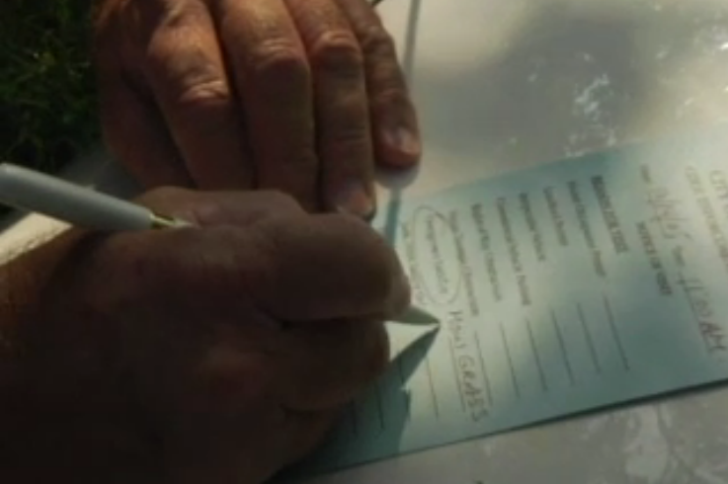
In 2008, a lawn enforcement agent stopped by a home in Bayonet Point, a subdivision in Hudson, Florida, outside of Tampa. Maybe the agent snapped some photos, maybe there were some boxes ticked off a checklist. Whatever the agent’s field methods, he or she went back to lawn enforcement headquarters and sent out a letter.
The recipient of the letter was Joe Prudente, who owns the Bayonet Point home with his wife, Pat. The letter said that their lawn was too brown, too weedy, and not maintained to standards.
The Prudentes had received a few of these letters before. They tried keeping a clean, green lawn. They watered and fertilized it, and had even completely re-sodded their front lawn three times. But patches of grass kept turning brown. Joe Prudente decided he would not re-sod the lawn again.
Joe met with his homeowners’ association, but they were not cutting him any slack. They told him if he didn’t re-sod his lawn, they would notify the court.
Shortly thereafter, Joe got another letter—a court order telling him to turn himself in, or that he would be arrested. At 66 years old, Joe Prudente—an otherwise law-abiding retiree from Long Island— presented himself to the Pasco County jail wearing a “Grandpa Gone Wild” t-shirt. He was apprehended on allegations of failing to properly maintain his lawn to community standards.
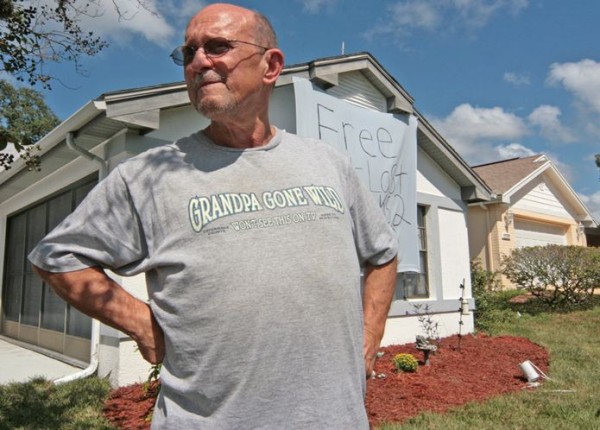
Now, fortunately for Joe, the local paper had written about the arrest and detainment of a senior citizen for having a brown lawn. Word got around, and dozens of people came out to help dig up and re-sod the Prudentes’ lawn. Joe was released from jail the next day.
Most cases of homeowners brushing up against “lawn enforcement” do not usually end in jail time. But Joe Prudente was not the only person to have ended up behind bars because of a landscaping issue. Frank Yoes of Grand Prairie, Texas, did two days in jail for having an overgrown lawn, and Gerry Suttle, a 75-year old former city council member of Riesel, Texas, had a warrant issued for her arrest until some neighborhood kids came by and mowed the lawn that she had been unable to take care of on her own.
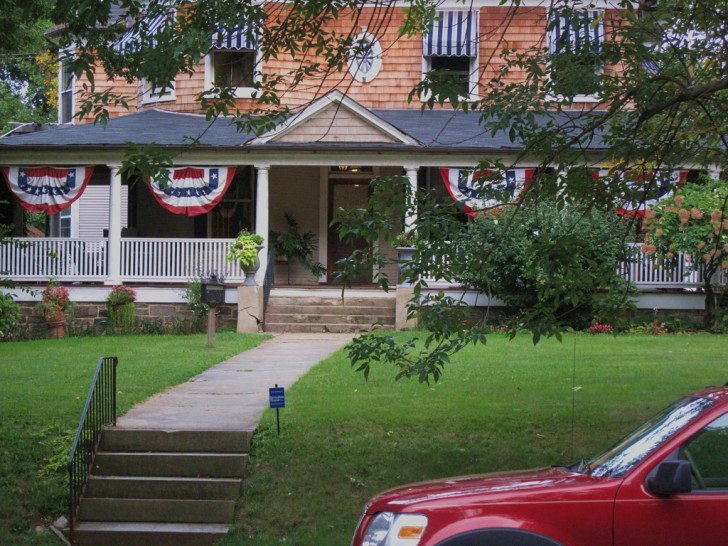
There’s a paradox to the lawn.
On the one hand, it is the pedestal on which sits the greatest symbol of the American Dream: the home, which people can ostensibly govern however they wish. And yet—homeowners often have almost no control over how they should maintain their lawn.
Grass may be a plant, but a lawn is a designed object.
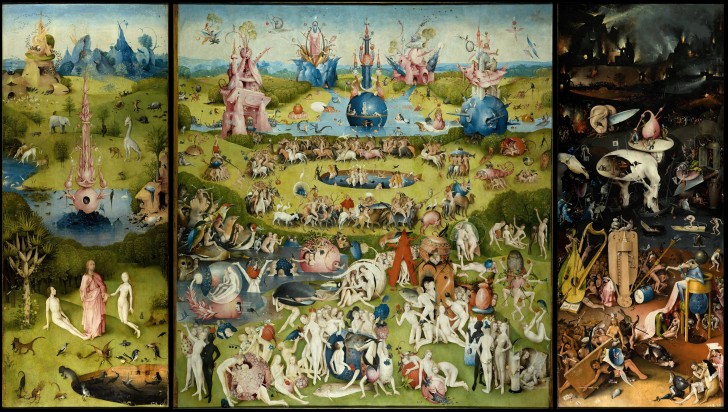
Even in the beginning, lawns were always about something else. The lawn—or really, the idea of lawns—has its roots in art. Biblical, pastoral scenes of grasslands and hedges captured the imagination of the English landed elites. They liked the paintings so much that they wanted to live inside of them.
A style of English garden developed, where a prominent feature is a green lawn. And right away, everyone recognized that these soft, verdant grasses were more than just a nice outdoor place to walk around barefoot.
A lawn was about power. It was a way for these English elites to show off that they were so wealthy that they didn’t need their land to grow food—they could afford to let their fields go fallow, and could afford to keep grazing animals and scythe-wielding peasants to keep it short.
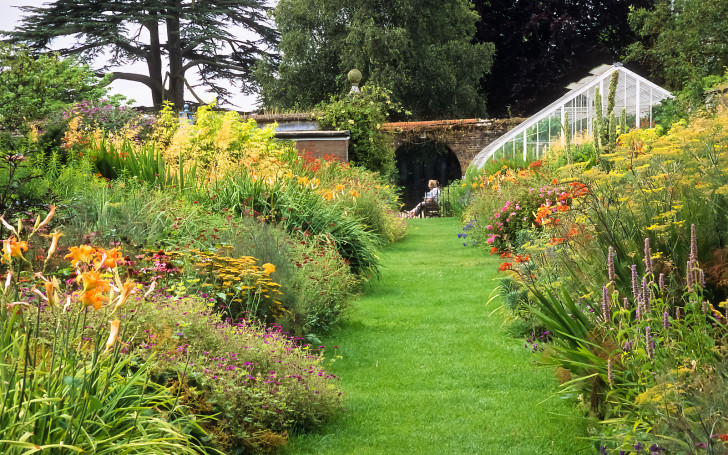
When European colonists set sail for the New World, they took grasses with them. But lawns were still mostly for rich people and eventually, public parks.
It wasn’t until the turn of the 20th Century, with the first suburbs, that lawns started appearing around the homes of the middle class. This is where the lawn shifts from being about the flagrant display of wealth to a moral force for the good of civilization.
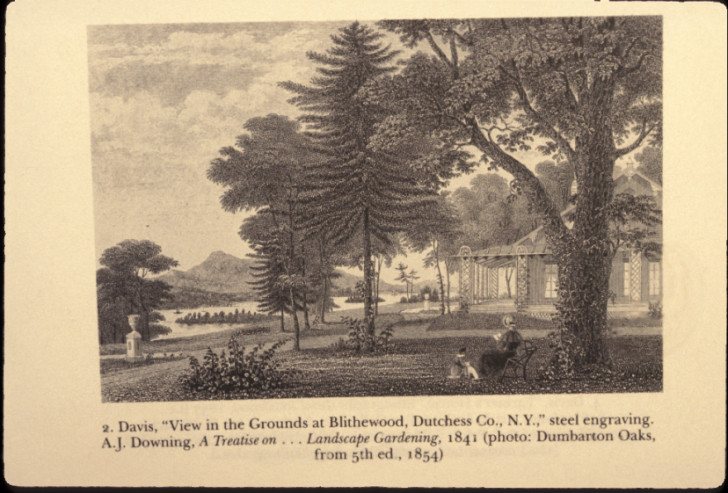
Andrew Jackson Downing, considered by some to be the father of American landscape architecture (along with his successor, Frederick Law Olmsted), promoted the lawn as a way of beating back the chaos of city life. Downing wrote in his 1850 treatise The Architecture of Country Houses, “when smiling lawns and tasteful cottages begin to embellish a country, we know that order and culture are established.”
Then, when the United States began to suburbanize in the 1950s, suddenly middle-class people were owning larger and larger swathes of land. Covering this land with grass was partially utilitarian—it was a cheap solution to doing something with a large piece of earth—but this connection between lawn and order grew stronger.
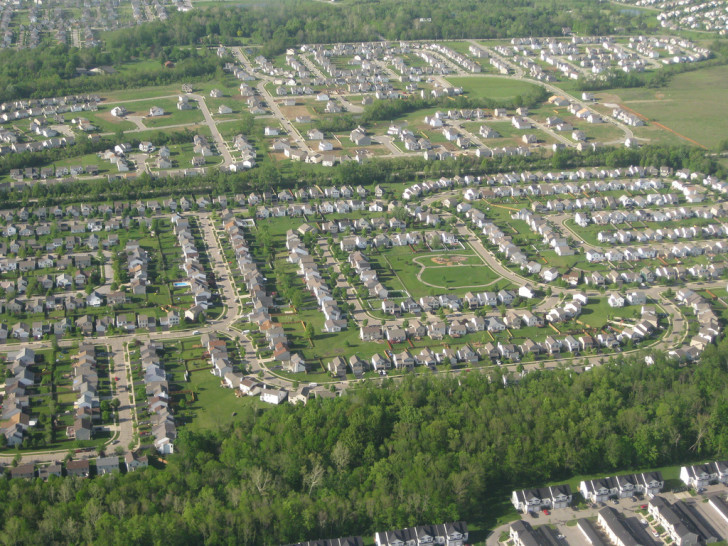
Today, grass is the largest irrigated crop in the United States. It comprises much of our urban fabric. A quarter of all of Franklin County, Ohio (which includes Columbus) is lawns—and that’s excluding sports fields and golf courses.
These grasses live a completely unnatural life cycle. We don’t let grass grow tall enough to go to seed, but we also water and fertilize it to keep it from going dormant. We don’t let it die, but we also don’t let it reproduce. Michael Pollan writes that “lawns are nature purged of sex and death.”
In his book Lawn People, political ecologist Paul Robbins interviewed dozens of people about their lawns. Interviewees told him that if their grass got too long, neighbors would come by and ask if their lawnmower broken, if they needed to borrow one. People who wouldn’t mow their lawn might find an aggressive neighbor had done it for them in the middle of the night or while they were out of town. Says Robbins,
The free-market American neoliberal subject who does as he or she pleases would just say, ‘To hell with my neighbors! I’m just going let my lawn grow!’ But instead they do the Communist thing, which is collective management of what is essentially a moral commons. It’s not your lawn, it’s the whole community’s lawn, and you’re responsible for this part.
But as much as the lawn seems to be rooted to the American landscape, we may be seeing a transition. At least, here out west.
California Governor Jerry Brown declared in 2015 that The Golden State would need to cut water use by 25%. “We’re in a new era,” said Brown. “The idea of your nice little green grass getting water every day—that’s gonna be a thing of the past.”
In California, the lawn is perhaps the most visible symbol of the drought. Water restrictions allow people to water only two or three times a week—down from four or five or even more. In California and Arizona and Nevada, governments are actually paying homeowners to rip out their grass, and replace it with artificial turf or landscaping that doesn’t need water.
Or, homeowners can just let their lawns go brown.
But if you’re not “down with brown,” and want to keep a green lawn amidst the drought, you can hire a lawn painting service.
Xtreme Green Grass, based in Sacramento, California, manufactures a non-toxic solution that turns brown grass green. They can also do white to emulate snow in the wintertime. Lawn painting is actually not new, but if you’ve never heard about it, it’s because it’s generally only been used on golf courses and pro sports fields. It’s only since this most recent drought that lawn painting has come to private residences. Xtreme Green Grass is based in Sacramento and has built up a nation-wide franchise. And they have a number of competitors. Many of Xtreem Green Grass’s clients are homeowners associations—which means lawn painting is becoming accepted by even the strictest lawn enforcement agencies. Perhaps we as a society are beginning to question the supremacy of the perfectly kept lawn. Now, in the dead of California’s drought, some people are berating each other for using too much water. See #droughtshaming
While it may be good that people are getting more conscious of their water usage, the moral architecture of drought-shaming is a little too familiar. It’s just the newest trend in how people police each other’s lawns.
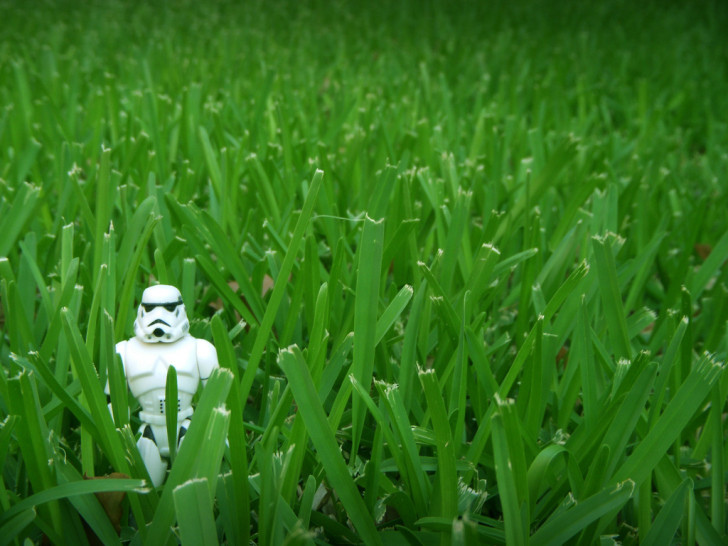



Comments (11)
Share
Thank you from putting a finger on what I hate about lawns: the social pressure, “moral” outrage, and public shaming centered on something that’s so unnatural and ultimately pointless.
On the list of issues to worry about, between institutional racism, sexism, etc., this aught to be somewhere way down at the bottom of the list near things like “Are tall or short socks more comfortable?”
Welcome to desert life California. You’re now in the same position that all of us here in New Mexico have been in for many, many years. Scheduled watering times, watering amount and time limits, etc… Just get used to really great xeriscaping in place of traditional lawns.
‘My township calls my lawn ‘a nuisance.’ But I still refuse to mow it’
https://www.washingtonpost.com/posteverything/wp/2015/08/03/my-town-calls-my-lawn-a-nuisance-but-i-still-refuse-to-mow-it/
A good read about a home owner resisting lawn mono-culture.
Take a look at this couple fighting against neighbors for growing a vegetable garden on their frontyard. It was a big issue in the news some years ago.
http://www.cbc.ca/news/canada/montreal/drummondville-couple-fights-to-keep-vegetable-garden-1.1211864
team olmsted!!!!!
Remember the “BTK Killer”? He was a lawn cop. https://en.wikipedia.org/wiki/Dennis_Rader
I love you guys, but Xeriscaping is NOT just “rocks and stuff” as this episode suggests. A cursory look at the wikipedia page might help:
https://en.wikipedia.org/wiki/Xeriscaping
The article talks about the problems with public perception. Xeriscaping does not need more misinformation about it being decimated, it already a big problem. Xeriscaping can be quite beautiful. While so much of the world is struggling with massive drought, we should be advocating low-water landscape done right instead of dismissing it as “rocks and stuff”.
Getting off my high-horse now, thanks!
This episode came out about a week after I was served a lawn enforcement notice. Excellent timing.
thank goodness the good people around where I live in Seattle have absolutely no problem with everyone letting their lawn go brown during the summer. In fact, it’s almost a reverse. Shame on those who water their lawn during the summer. Probably the same people put fertilizer on their lawn, and then it all washes down in the the salmon rivers.
A good episode as usual but, boy, did you guys miss the forest for the trees (or the lawn for the blades).
(1) Prior to the ’50s there was no traditional grass lawn. There was green ground cover. Then Scotts created an ad campaign that designed this tradition in order to sell grass seed, just as DeBeers’s ads created the tradition of giving diamond as a sign of love in order to sell their rocks. You could do a whole show on designed “traditions” that are, in fact, just successful advertisements.
(2) The key phrase in the story is “homeowners association.” The guy doesn’t live in an organic community. He lives in a designed, autocratic enclave where the standards are written into the bylaws and must be obeyed regardless of circumstances in the real world. They are becoming increasingly common, and their ways will no doubt be transferred to the rental housing (at least at the lower levels of homes) that will surplant the so-called “tradition of homeownership” (itself brought about by companies and banks trying to create an incentive, a mortgage, for unionized workers not to strike).
Why not use greywater to water whatever ornamentals are growing. Just use enviro friendly soap and collect water from handwashing, showering and laundering. Do not use greywater that may contain bleach, salt, oil. Do not use greywater on edibles.